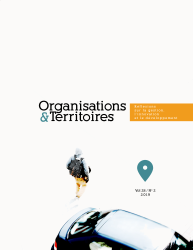L' État québécois et ses territoires
DOI:
https://doi.org/10.1522/revueot.v28n2.1045Keywords:
Territories, Quebec, public policies, territorial planningAbstract
According to an important historical practice, the various territories of Québec have hosted, since the Quiet Revolution, several successive public policies to deal with targeted territorial issues. To achieve this, three global concepts of territory general organization have been applied, namely the hierarchy of urban centres, agricultural zoning and urban-rural cohabitation. Between the local municipalities and the Quebec government, two new territorial scales of governance were thus institutionalized: the administrative regions and the regional county municipalities (RCM). Territorial planning was greatly used to this end through specific procedures. There were actual benefits in terms of development, public management of collective goods and services, and support for social, cultural and economic development. Nonetheless, there are significant territorial problems and latent inner workings that must be addressed by territorial policies. The mission of the Quebec government that is responsible for its territories remains unavoidable.



